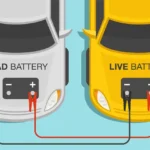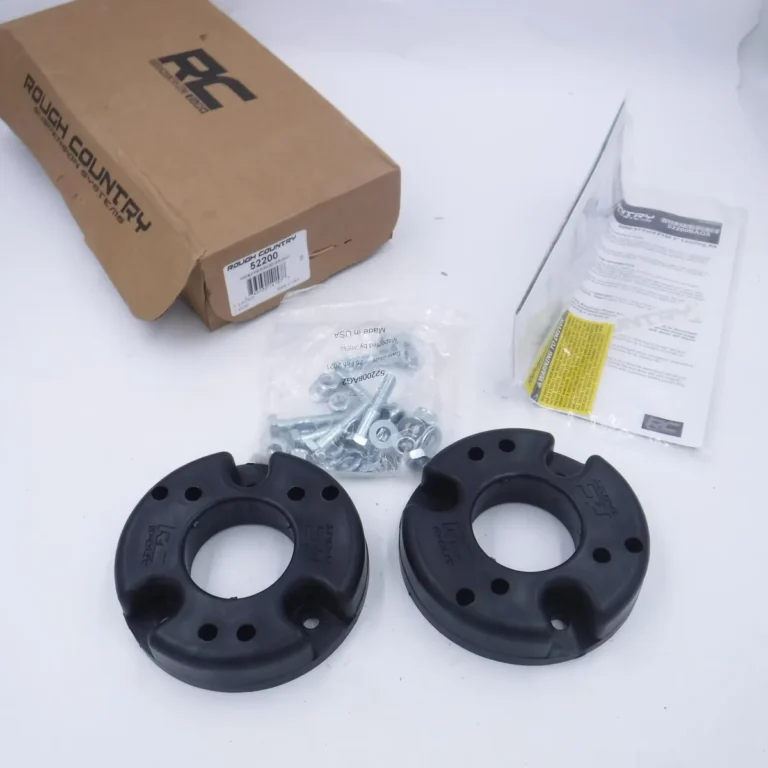How Many O2 Sensors Does a Ford F150 Have
A Ford F150 typically has four oxygen sensors. These sensors are essential for maintaining proper fuel efficiency, preventing pollution, and protecting the catalytic converter and engine components from damage.
If you’re wondering how many O2 sensors your Ford F-150 has, you’re in the right place! These sensors play a crucial role in monitoring your truck’s fuel efficiency and emissions. Knowing their number and location can help with diagnostics and replacements.
So, how many O2 sensors does a Ford F-150 have? Most Ford F-150 models have four oxygen sensors—two upstream (before the catalytic converters) and two downstream (after the catalytic converters). However, the exact number may vary depending on the engine type and model year. These sensors help regulate fuel mixture and emissions for optimal performance.
Need to locate or replace them? Keep reading for a detailed guide on O2 sensor placement, common failure symptoms, and DIY replacement tips!

Understanding O2 Sensors in Your Ford F-150
Your Ford F-150 relies on oxygen (O2) sensors to monitor exhaust gases and optimize fuel efficiency. These sensors play a crucial role in keeping your engine running smoothly and reducing emissions. But how many O2 sensors does your F-150 have, and where are they located? Let’s break it down.
How Many O2 Sensors Does a Ford F-150 Have?
Most Ford F-150 models have four oxygen sensors:
- Two upstream sensors (before the catalytic converters)
- Two downstream sensors (after the catalytic converters)
However, the exact number can vary depending on your truck’s engine type, model year, and exhaust system configuration. Below is a breakdown of how O2 sensors are arranged in different F-150 models:
O2 Sensor Count by Engine Type
| Engine Type | Number of O2 Sensors | Sensor Placement |
|---|---|---|
| 3.3L V6 | 4 | 2 upstream, 2 downstream |
| 2.7L EcoBoost V6 | 4 | 2 upstream, 2 downstream |
| 3.5L EcoBoost V6 | 4 | 2 upstream, 2 downstream |
| 5.0L V8 | 4 | 2 upstream, 2 downstream |
| 6.2L V8 (Older Models) | 4 | 2 upstream, 2 downstream |
| 7.3L Godzilla V8 | 4 | 2 upstream, 2 downstream |
| Diesel (3.0L Power Stroke) | 4-6 | Depends on emissions setup |
Most gasoline-powered Ford F-150s have a dual exhaust system, meaning they require four sensors—two before the catalytic converters to measure oxygen levels in the exhaust and two after to monitor emissions efficiency.
Where Are the O2 Sensors Located?
Your O2 sensors are positioned along the exhaust system and are split into two categories:
- Upstream O2 Sensors (Bank 1 Sensor 1 & Bank 2 Sensor 1) – These are installed before the catalytic converter, close to the exhaust manifold. They measure the oxygen level in the exhaust gases before they pass through the catalytic converter.
- Downstream O2 Sensors (Bank 1 Sensor 2 & Bank 2 Sensor 2) – Located after the catalytic converter, these sensors check how efficiently the converter is reducing emissions.
How to Identify the Right Sensor?
- Bank 1 refers to the side of the engine where cylinder #1 is located.
- Bank 2 is the opposite side.
- Sensor 1 is before the catalytic converter.
- Sensor 2 is after the catalytic converter.
If you have an OBD-II scan tool, you might see codes like P0130, P0150, P0136, or P0156, which can help identify which sensor is faulty.

Signs of a Failing O2 Sensor in a Ford F-150
A bad oxygen sensor can cause a range of problems, from poor gas mileage to rough engine performance. Here are common symptoms:
1. Check Engine Light Is On
The most obvious sign is a Check Engine Light (CEL). If your F-150’s computer detects an issue with an O2 sensor, it will trigger this warning.
2. Poor Fuel Economy
A faulty sensor may cause your truck to burn more fuel than necessary, reducing fuel efficiency.
3. Rough Idling and Misfires
If the sensor sends incorrect data to the engine control unit (ECU), it can cause rough idling, engine hesitation, or even misfires.
4. Increased Exhaust Emissions
If your F-150 fails an emissions test, a bad O2 sensor could be the culprit, as it affects the fuel-to-air mixture.
5. Black Smoke from Exhaust
A rich fuel mixture (too much fuel, not enough oxygen) caused by a bad sensor can lead to black smoke from the tailpipe.
How to Replace a Bad O2 Sensor in a Ford F-150
If you’re experiencing any of the above symptoms, you might need to replace one or more of your O2 sensors. Here’s a step-by-step guide:
Tools You’ll Need:
✔️ OBD-II Scanner (to confirm which sensor is bad)
✔️ Oxygen Sensor Socket/Wrench
✔️ Penetrating Oil (WD-40 or PB Blaster)
✔️ Ratchet and Extension
✔️ New O2 Sensor
✔️ Safety Gloves
Step-by-Step Guide:
1. Identify the Faulty Sensor
Use an OBD-II scanner to read trouble codes. A code like P0131 means Bank 1 Sensor 1 is faulty, while P0157 refers to Bank 2 Sensor 2.
2. Disconnect the Battery
Turn off your truck and disconnect the negative battery terminal to prevent electrical issues.
3. Locate the Sensor
Crawl under the truck and find the sensor based on the OBD-II trouble code.
4. Apply Penetrating Oil
Spray WD-40 or PB Blaster on the sensor threads to loosen rust and make removal easier.
5. Remove the Old Sensor
Use an oxygen sensor socket and ratchet to carefully unscrew the sensor. Be gentle to avoid damaging the threads.
6. Install the New Sensor
Hand-thread the new sensor in place first, then tighten it with a wrench.
7. Reconnect the Battery and Clear Codes
Reconnect the negative battery terminal, start the engine, and use your OBD-II scanner to clear any stored trouble codes.
How Much Does It Cost to Replace an O2 Sensor?
- DIY Replacement: $30 to $100 per sensor
- Mechanic Labor Cost: $200 to $400 per sensor
Replacing an O2 sensor yourself can save you hundreds of dollars if you have the right tools!
Preventing Future O2 Sensor Issues
To extend the lifespan of your sensors, follow these tips:
✅ Use High-Quality Fuel – Bad fuel can clog O2 sensors.
✅ Check for Exhaust Leaks – Leaks before the sensors can cause false readings.
✅ Keep Your Engine Tuned Up – Regular oil changes and spark plug replacements help keep sensors clean.
✅ Inspect Sensors During Maintenance – Look for damage or carbon buildup when servicing your truck.
Frequently Asked Questions Of How Many O2 Sensors Does A Ford F150 Have
Do I Have To Replace All 4 O2 Sensors?
No, you don’t have to replace all 4 O2 sensors. However, it is recommended to replace the faulty ones as it can affect the engine’s performance and fuel efficiency.
Where Are The O2 Sensors Located On A Ford F150?
The O2 sensors on a Ford F150 are located in the exhaust system. There are typically two sensors, one before the catalytic converter and one after.
Will An F150 Run Without O2 Sensor?
No, an F150 will not run properly without an O2 sensor. It can cause the engine to run rich or lean, leading to fuel wastage, pollution, and potential damage to the catalytic converter, valves, and pistons.
How Much Does It Cost To Replace An O2 Sensor On A Ford F150?
Replacing an O2 sensor on a Ford F150 typically costs around $100 to $300.
Conclusion
To summarize, the Ford F150 has a total of four oxygen sensors. These sensors are essential for the proper functioning of the engine, as they help regulate the air and fuel mixture. Without these sensors, the engine may run inefficiently, leading to wasted fuel, pollution, and potential damage to the catalytic converter.
Therefore, it’s important to regularly check and replace these sensors to ensure optimal performance and fuel efficiency.
Still have questions? Drop a comment below or check out our other Ford F-150 maintenance guides!



















